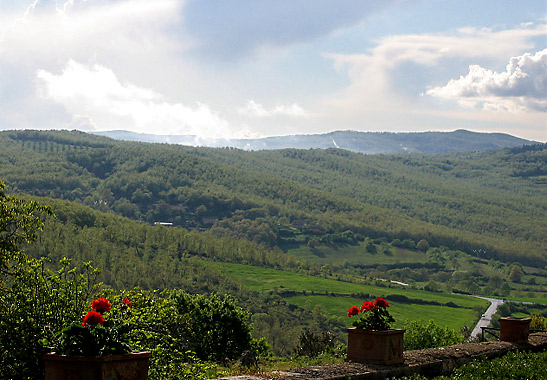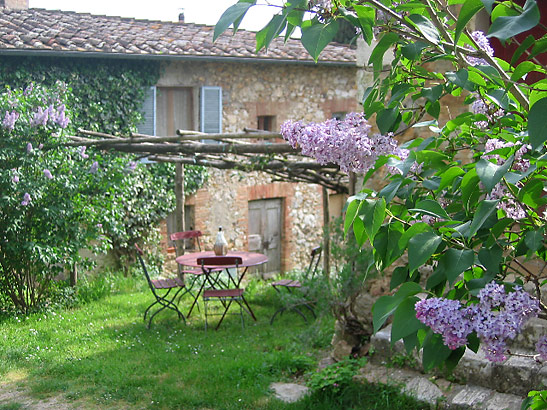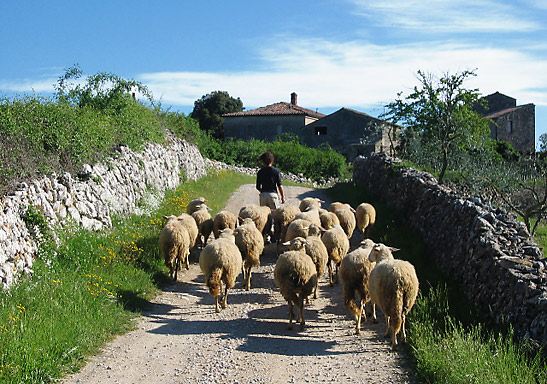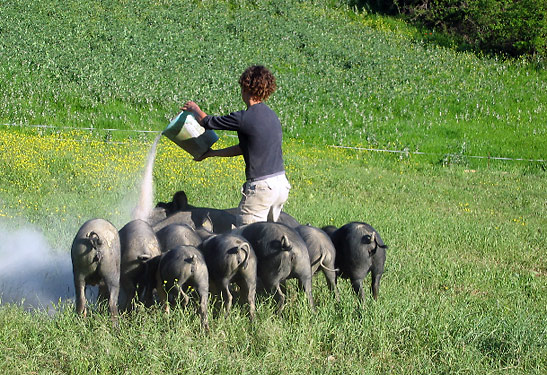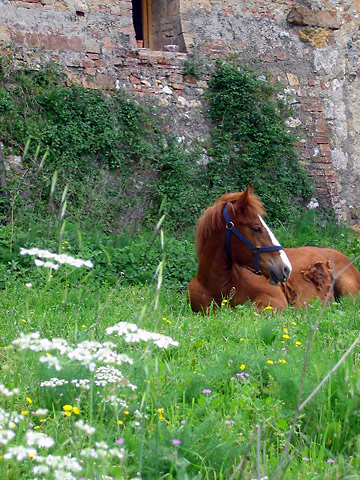 |
 |
|
 |

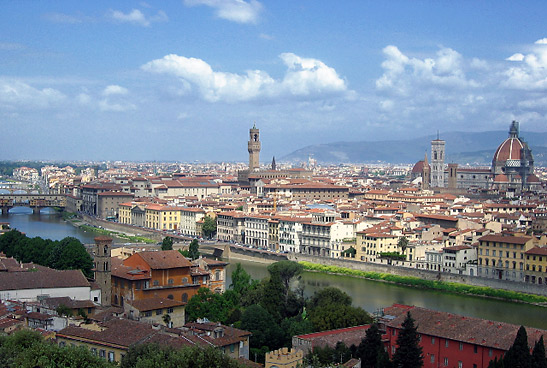 Florence is bisected by the Arno River A Week on a Tuscan Farm
I was headed south about 50 miles for a week’s visit to another of the country’s great treasures, and to discover how Italian landscape art is being preserved in the country.
Lost in the burnt-Siena soils and green-grey hills of Tuscany, lies the 1,100 acre organic farming community and non-profit educational center of Spannocchia, where visitors can immerse themselves in workshops on Italian language, literature, art, crafts, Tuscan cooking and sustainable farming; help with the farming chores, grow vegetables, feed and care for the animals, or just lie poolside and enjoy the fruits of a working farm.I was lucky enough to arrive on Pizza night and gorge on a never-ending variety of delicious flat breads, laced with the farm’s olive oil and abundant meats and vegetables.
Food is an important part of the experience. During my week the chefs served wonderful salads and seasonal vegetables grown in the gardens along with chicken, wild boar, pasta, sausages, venison, lamb, suckling pig and beef all from the farm. Thanks to the Cinelli family that owns and manages the 12th century property, Spannocchia retains much of the feel of the mezzadria or sharecropping society that characterized the area for over 800 years. Just 20 minutes south of Siena, it represents a way of life that is fast disappearing in Tuscany and Europe. Dedicated to preserving native foods and livestock, Spannocchia has 80 of the last remaining 400 sheep indigenous to the area.
The endangered breeds cultivated by the Noah’s Ark project include pigs, chickens, horses, cows and donkeys. There is a renewable forestry project, a water conservation program, bee keeping and a heavy emphasis on recycling and the composting of the soils. The farm is close to self-sustaining, producing most of the food consumed by the community, including its own olive oil and red and white wines, which are cheerfully consumed each evening on the veranda of the castle while discussing the events of the day and watching the sun set over the farm and the magnificent Tuscan hills.
Every three months 10 new interns are chosen to work on the farm and experience Italian culture and lifestyle in a hands on environment. Some stay on and become part of the community. I spent much of my time working with Nikki Conzo, who tends all the animals. The young American has spent three years at Spannocchia. The grounds are composed of seven villas and the main castle, accommodating up to 80 visitors at one time. Rates vary by season and location. To stay on the property you need to join the Spannocchia Foundation ($60). To learn more about the history, purpose and internship program, visit www.spannocchia.org, for reservations, www.spannocchia.com, or call Executive Director Erin Cinelli, (207) 871-5158. Related Articles: |
|
Feedback for South of the Border Wine Country Hello John – I enjoyed reading your article. I live in
La Bufadora and have friends visiting next week, so you have given me some good
tips on where to go in our wine country. We have always called Cetto –
L.A. (like Los Angeles) Chet-o and it might have been worth mentioning that
it is actually Italian in origin. Also, I don't know about when visiting the
Valle, but when in town, it is better to have pesos than dollars. Right now
the rate is approx. 11.70 for each dollar. Just sayin' and like I said good
article!
Hi, We here at Country Living Magazine are working on a story about hotels around the US. We would like to feature the Paso Robles Inn. I have to find photos to go along with the story. I was wondering if you could please send me any images of the hotel. This can be anything from the rooms to the food! All images can be submitted low res and if selected I will ask for hi rez later. Also, if you know of any photographers that have photographed the hotel can you please give me the contact info? Thank you so much! --- Will Morel, Assistant Photo Editor, Country Living Magazine, New York, NY
I am looking forward to my "silver" years, which in my case, will be the years (if fate is good to me) that I will finally be traveling. New Zealand is at the top of the list - I have always been drawn to it. --- Sandra Mines, Seattle, WA
Yes, was a fun city. Bad wine though. --- Bo, Portland, OR
|
This site is designed and maintained by WYNK Marketing. Send all technical issues to: support@wynkmarketing.com

|







